APRIL
April is often a lovely month, the daylight is longer, the weather a bit warmer and there’s the possibility of some sunshine. The tourist season has started too. Easter is what starts it off, so is your church looking clean and tidy and welcoming to anyone who might venture through your door?
Simple things make churches welcoming, the best of all being flowers. They brighten up the building, flowers bought, wild or from your garden. Many churches now have visitor counters and contactless giving machines. The recent Heritage Lottery project provided many of them and it is paying off.
Those churches have real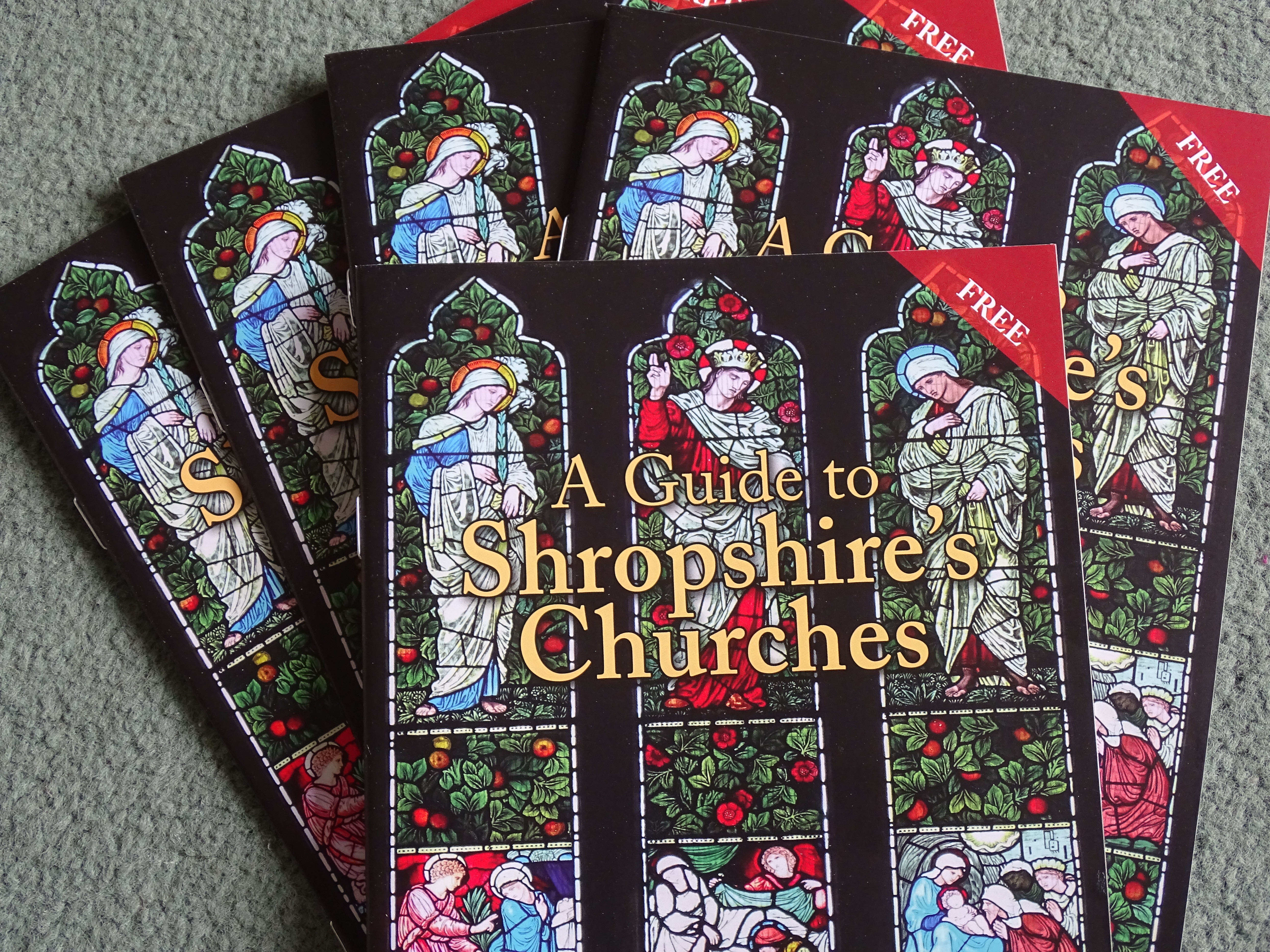 ised that many more people walk into their churches than the visitor book
ised that many more people walk into their churches than the visitor book
shows and contactless giving makes it easy for people to donate. And they do!
Shropshire Churches Tourism Group (SCTG) has lots of ideas on its website for welcoming visitors.
This is also the year when, if your church is not a member, you can join. Sign up for £60 for 3 years
membership. You will be featured in the next brochure which will be printed next year (2025/year 2)
which will be available for 3 years. 30,000 brochures are printed for distribution around churches, visitor information centres in the County and surrounding ones, major visitor attractions where possible and any other relevant place we can think of. You will have a church page on the website: promotion on Facebook and Instagram: special events advertised widely. There are opportunities to learn more about pleasing visitors and help when you need it. We are planning day trips to some member churches each year too.
April might also be the month you turn up to see what the Churchyard Task team are doing in a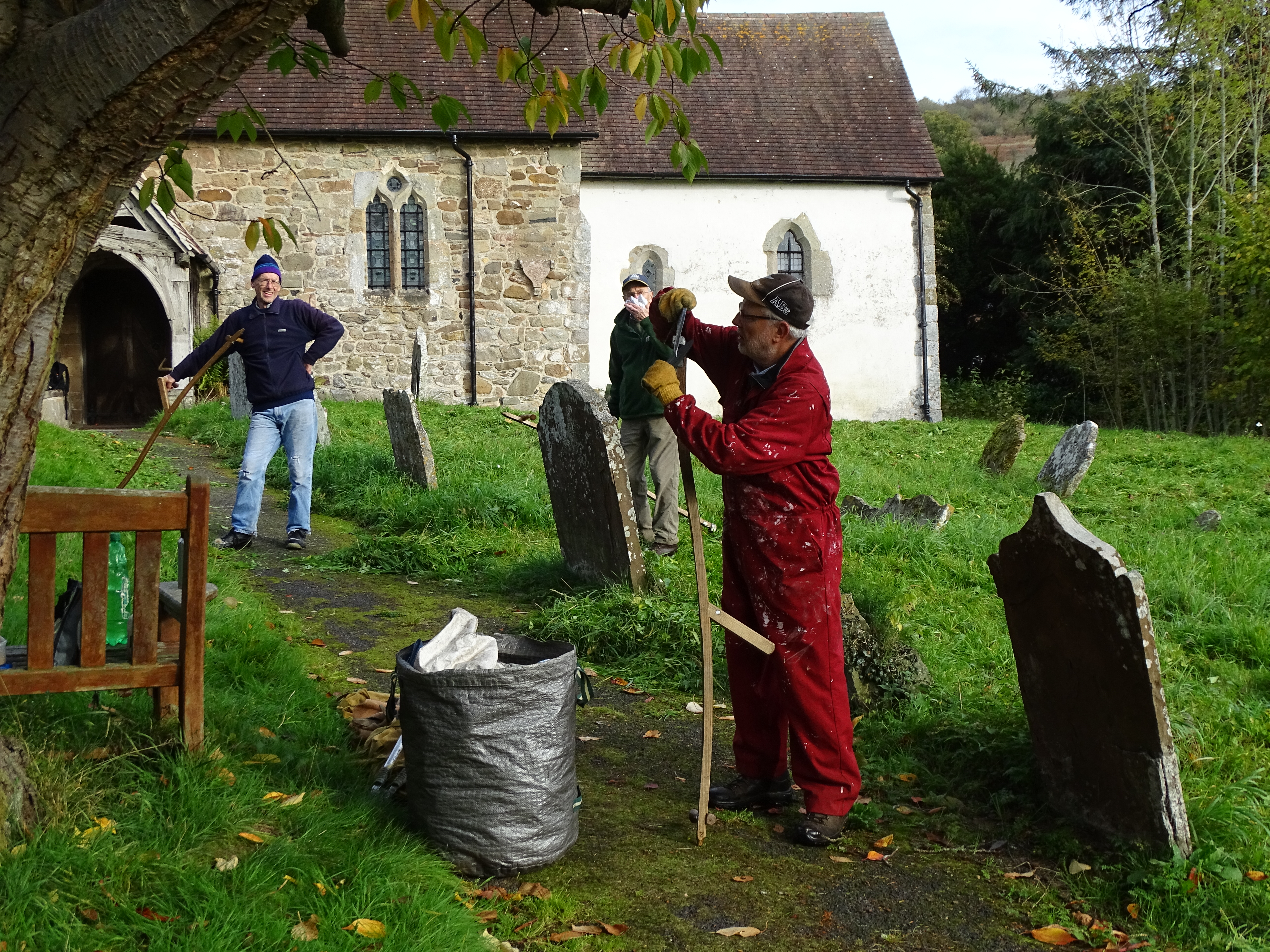
churchyard near you. It’s a sociable thing to do, it’s good for your health to be outside and you are
contributing positively to the environment. There are lots of different tasks to do like cutting back,
building habitat piles and taming the ivy to name but a few. I cannot believe that since retiring I have
learned to scythe, can have a go at laying a hedge not to mention constructing a dry stone wall - not
what I had planned for my retirement but what a privilege. We always like to see local people when
we are working in your churchyard and cake is always welcome!
Churchyard Task Team - Dates for April 9 th Burrington, 11 th Ford, 16 th Caynham, 18 th Montford, 23 rd Bromfield, 25 th Kinnersley Cemetery, 30 th Cressage.
Anni Holden Calver, Secretary of Shropshire Churches Tourism Group (SCTG)
www.discovershropshirechurches.co.uk
Trustee of Caring for God’s Acre and Churchyard Task Team cheerleader!
www.caringforgodsacre.org.uk
Above: The Churcyard Task Team at Hope Bagot.
MARCH
THAWING
Over the land freckled with snow half thawed
The speculating rooks at their nests cawed
And saw from the elm-tops, delicate as flower of grass,
What we below could not see, Winter pass.
Here’s a poem by Edward Thomas. It only comprises 4 lines but I think it’s very
clever, reminding us that other species can have the edge over us humans. Edward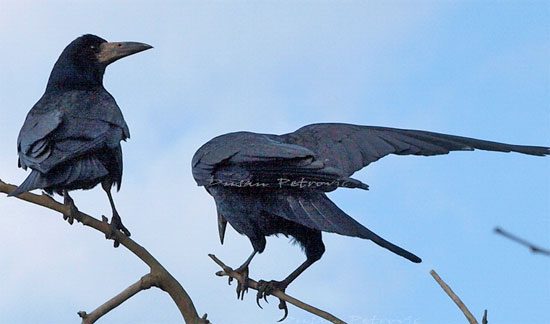
Thomas (a favourite poet of mine, probably because my dad was fond of him)
enlisted in the First World War in 1915 and was killed in 1917 at the age of 38.
He had been part of a group of poets called The Dymock poets, Dymock being a
small village in North Gloucestershire, close to the Herefordshire border; other poets
included Robert Frost, Rupert Brooke, another sad loss in WWI, and Eleanor
Farjeon. The death of Thomas saw the disintegration of the group.
But back to Thawing, as the poem above is called. I was in Stanton Lacy recently
enjoying the annual carpeting of the churchyard by thousands of snowdrops and still
worth a visit at the start of March.
My recent trip to Stanton Lacy offered more than snowdrops. From the sky above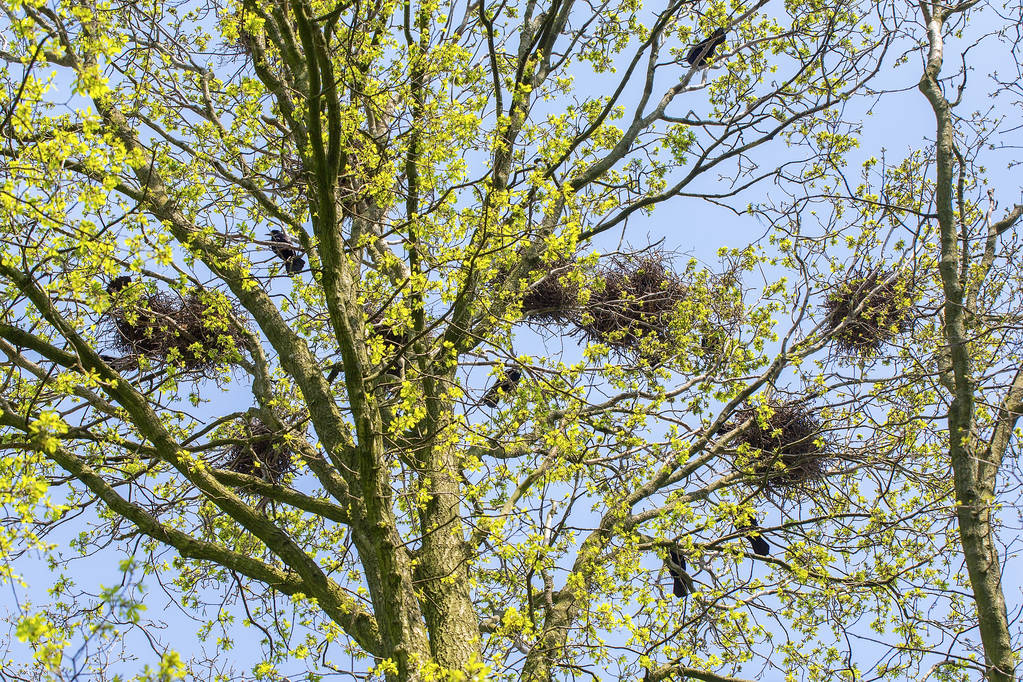
the trees in the churchyard, came a cacophony of noise. The rooks were preening
themselves as they landed on the high branches hoping to attract interest from one
of the female rooks, perching nearby and looking coy. (I had binoculars!
Many rooks were already paired up, and they pair for life. They are also very
sociable, forming large colonies and returning to their chosen nesting places each
year. Rooks are very sharp when it comes to building. A bit of warm weather and
they are collecting twigs. As we know this January was the hottest on record so by
the end of February the nests will be ready for eggs. While building and renovating
some from last year to use again, these intelligent birds do not need a DIY shop,
they just work together and create nests for all. This month, they will lay about 3- 5
eggs and baby rooks will leave the nest next month. They will stay close to Mum and
Dad until autumn when they will join the colony as they stay together in their winter
lodgings.
Edward Thomas’s little poem sums up the activity and the racket that rooks can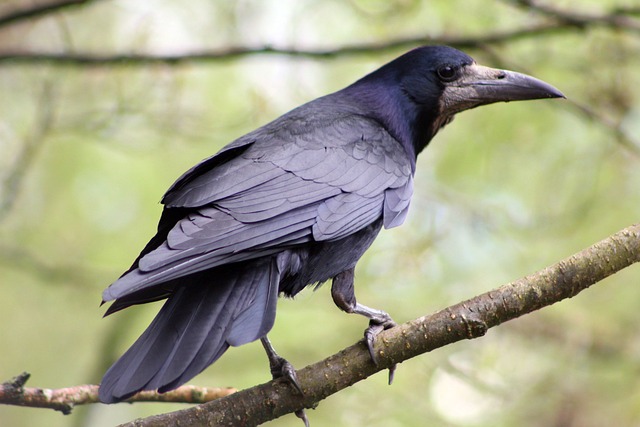
make. But he also points out that they know more than us humans. They rise above
us in flight and can see before we can the weather that is coming. The subtle way
the poet enjoys the role of the rooks here is lovely. They take it for granted; they
know that winter is gone. From their point of view Winter is well on its way out. They
may not know it's March, but they know Spring is arriving and they are ready for this
new season. Shall we humans join in?
Anni Holden Calver
Trustee of Caring for God’s Acre and member of the Churchyard Task Team
Secretary of Shropshire Churches Tourism Group
February
Song of Songs
For lo, the winter is past
The rain is over and gone;
The flowers appear on the earth;
The time of the singing of birds is come
And the voice of the turtle dove is
heard in the land.
I know it’s still only February but I find this short quote from the Second Song in the Songs of Solomon (a book found in the Bible) comforting. A short message of hope for better things to come, at least the weather if not the world situation. I’m hoping that by the time you read this the world will be a safer, happier place than it has been lately.
I keep telling myself I have to adapt and move with the times. If you remember last month’s offering, you will know I was resolving to be a nicer person in the New Year. So far I think I am doing alright. I love offering a “good morning” to a passing stranger. In most cases people respond cheerfully too. You get a beaming smile and sometimes a comment on the weather - just a small thing to do, but it’s making me feel better every time. I recommend having a go.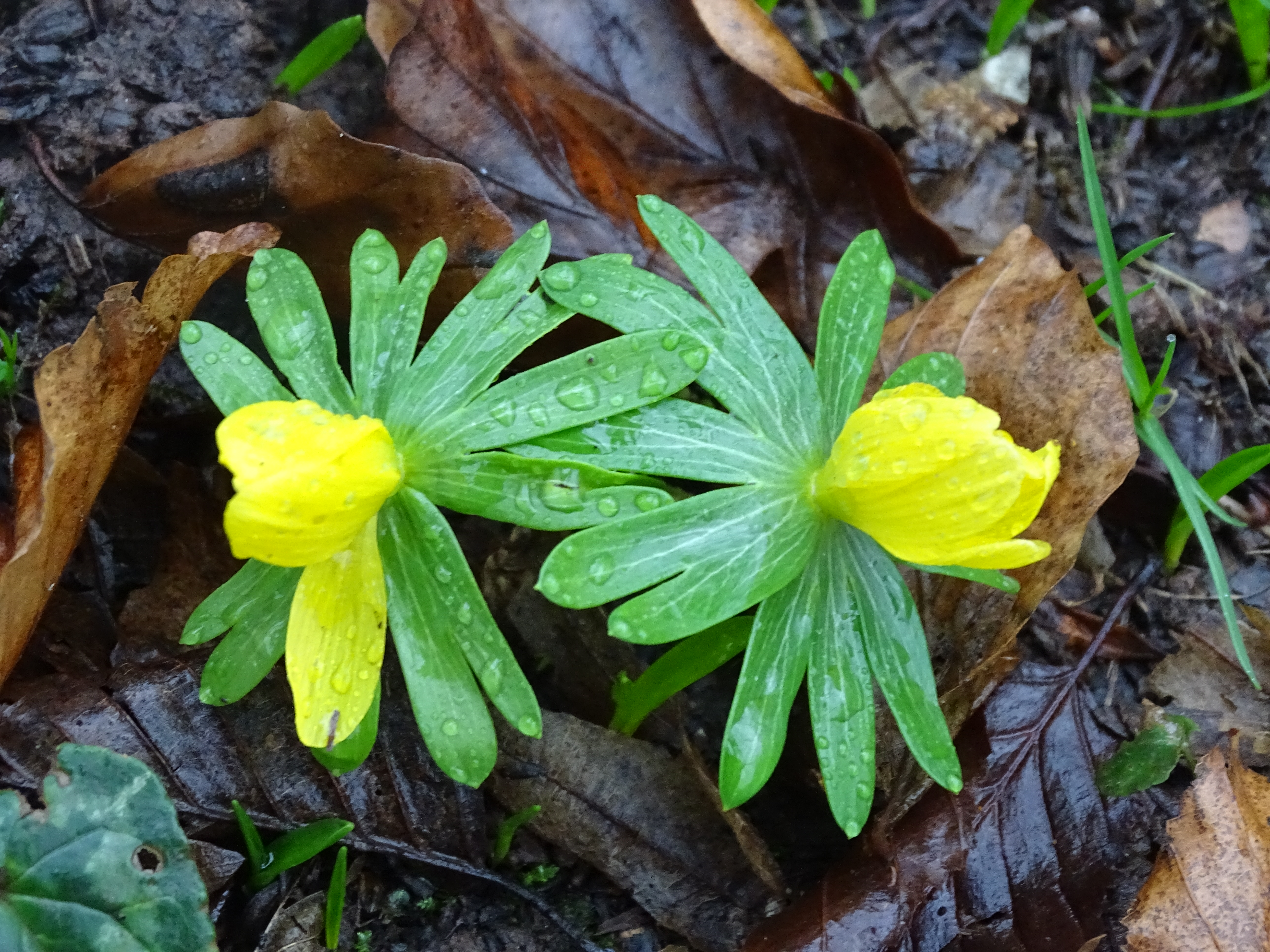
I think in winter we all get bit grumpy. There is not enough light in the day. I know the
days are getting longer but it’s not quick enough for me.
A couple of years ago at this time - or was it before COVID? - I was feeling a bit down. Ipicked up my camera and visited a local open garden to see if I could find something
colourful to photograph. I found 10 different plants in flower! I have had snowdrops in
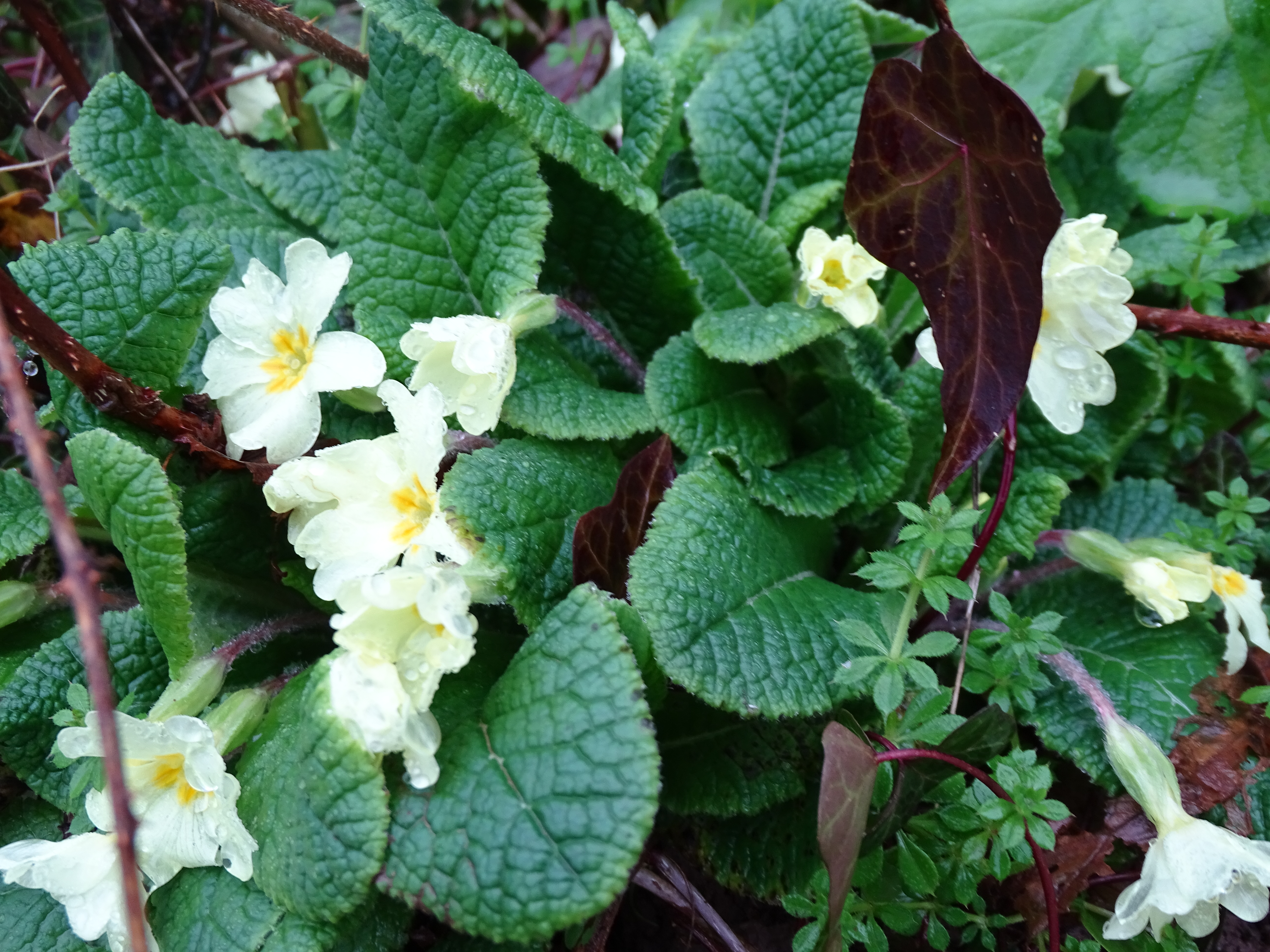 my garden since the middle of January, but that year I found hellebores, winter flowering honeysuckle, primroses in sheltered places, winter aconites as well as the expected crocuses and more besides. We can learn a lot from the natural world around us and often it is good news. The plants had to put up with rain and floods just like we did, as did all those small mammals that live in our countryside. They seem to be recovering so perhaps we can follow?
my garden since the middle of January, but that year I found hellebores, winter flowering honeysuckle, primroses in sheltered places, winter aconites as well as the expected crocuses and more besides. We can learn a lot from the natural world around us and often it is good news. The plants had to put up with rain and floods just like we did, as did all those small mammals that live in our countryside. They seem to be recovering so perhaps we can follow?
So our little part of the 2 nd Song of Solomon addresses the flowers and I think we can all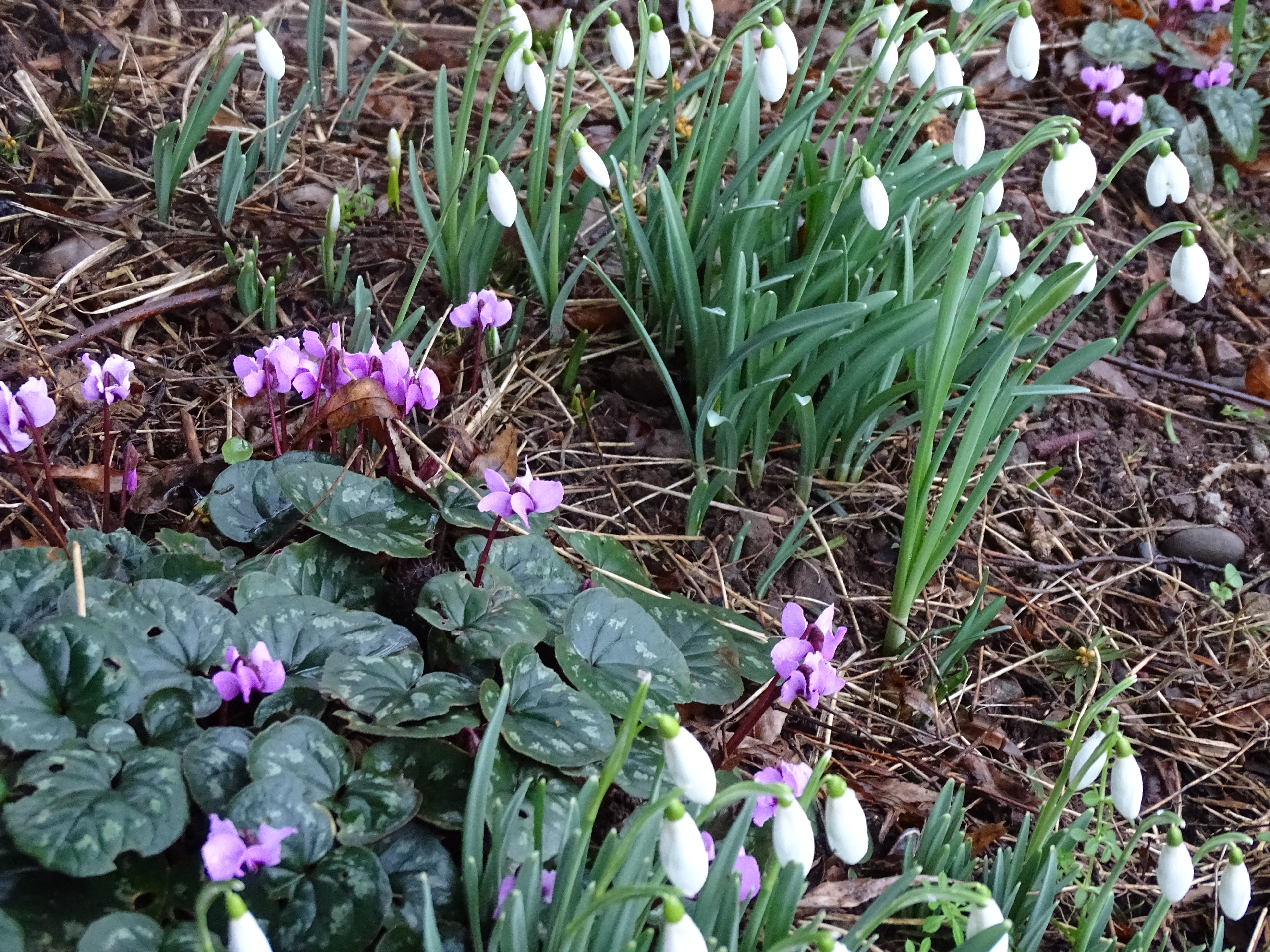
agree that the birds are singing again. St Valentine’s Day, 14 th February, is the date in medieval times that birds paired up, so they should be making plenty of song before the end of this month, something to look forward to. It may not be turtle dove locally. It’s more likely to be the local wood pigeons or occasionally collared doves if you are lucky, calmer than the pigeons!
Anni Holden Calver
Trustee of Caring for God’s Acre and member of the Churchyard Task Team
Secretary of Shropshire Churches Tourism Group
January:Its January, so HAPPY New Year 2024 First thoughts have got to be resolutions -
but hey , lets park them until later and find out more about this month. The
celebrations in years gone by went on until Plough Monday , the first Monday after
January 6 th , the Twelfth Day of Christmas, when it was time for all good men and
women to get back to work. The shoots of St Stephen’s day (26 th December) were
just memories, the bells had rung in the New Year, and many a dark haired man had
waltzed through a house bringing good fortune for the coming year, 12 th Night had
been wassailed away as fires burned and it was time to return to the land with a
vengeance. The year depended on it.
I feel exhausted just writing that as it seemed to go on for so long. It leads me to
thinking about our New Year. It’s 2024 already, and I’ll be a year older by the end of
this month. So what sort of year are we going to have? I think last year could be
described as turbulent - and I don’t just mean the weather!
I think it’s time to calm down and concentrate on being a nicer person. I would love
to be a kinder person and I think I need to start trying harder before it is too late. It
means being more positive , not constantly seeing the negative in every situation,
but accepting the way things are. This could mean not getting irritated with those
who don’t agree with me or you. This is hard if it’s an issue close to our hearts. Got
to be worth a try though I think
I am going to try to more generous in 2024. I am going to look at my charitable giving
and see what I might change and/or uprate. A small amount more from those of us
who can, could add up to a big amount for our favourite charities. I am also hoping
to be more generous to people too and try not to be judgemental. Thanking others is
good too. I have discovered that if you thank those who stop at the crossing, whether
because they have to or if they choose to, if you give them a cheery wave of thanks
and mouth “thank you” as you cross in front of them, you get a cheerful response.
The age or gender of the driver is not relevant either. People enjoy the brief friendly
exchange and so do I.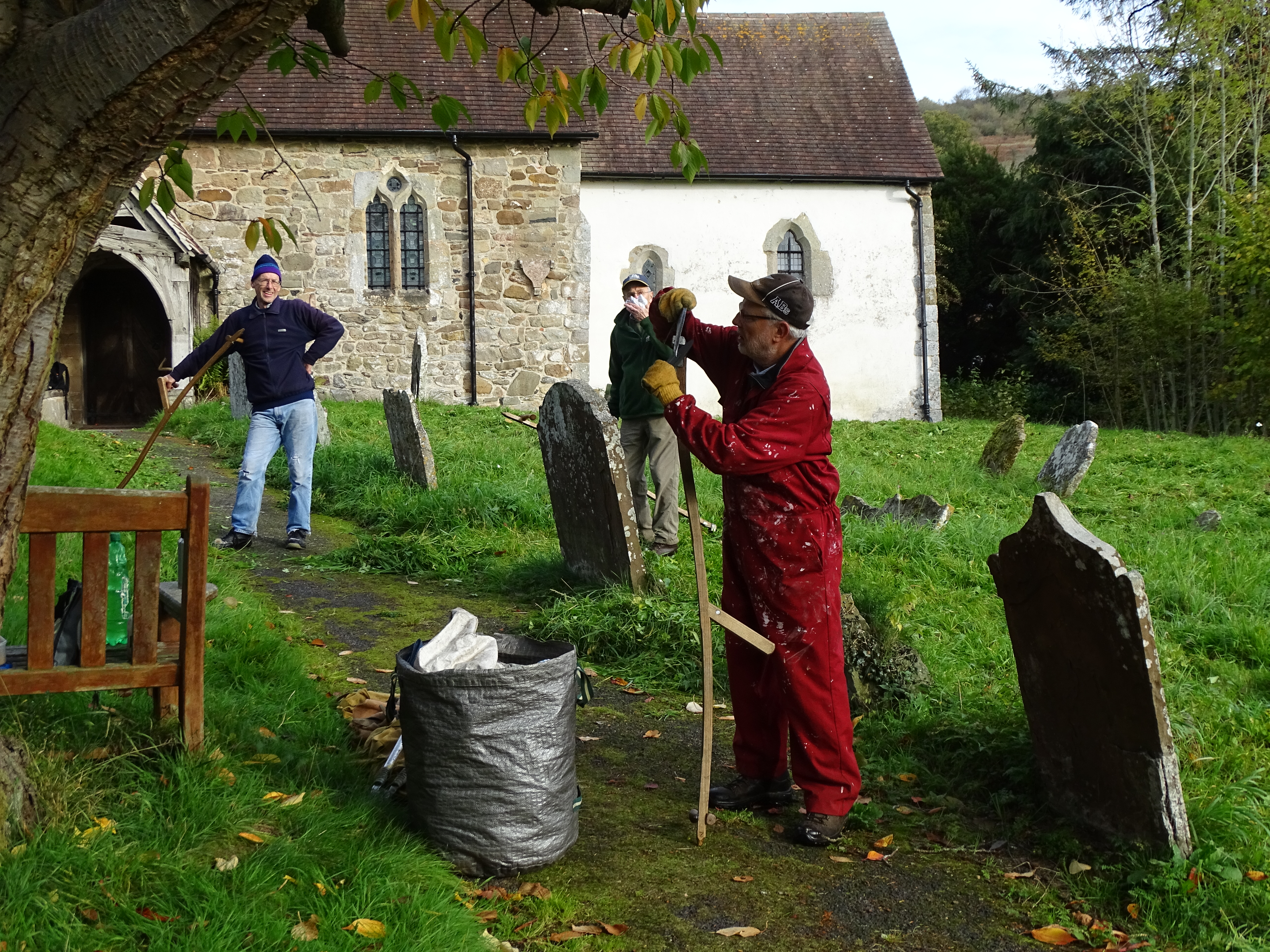
A suggestion to finish: in 2024 consider joining the Churchyard Task Team in the
fresh air one day a week. We are a happy and sociable team. We are privileged to
have some stunning buildings as our backdrop to our tasks. Check out
https://www.caringforgodsacre.org.uk/about-us/conservation-volunteers/
and contact Alex.
Anni Holden Calver
Trustee of Caring for God’s Acre and member of the Churchyard Task Team
Secretary of Shropshire Churches Tourism Group
St John the Baptist, Hope Bagot.
December: Winter in the Churchyard
The Churchyard Task Team works until the first week in December. The following week we
enjoy a Christmas lunch at a local pub and then we take a break. We return in the second
week of January…and each time we do, it always feels different.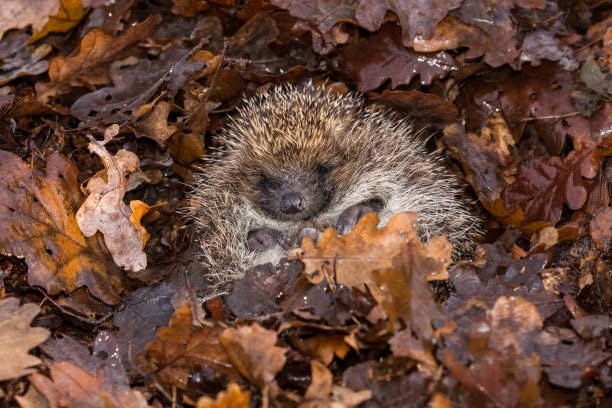
While we have been away, the winter has stripped even more leaves from the trees, nothing
has grown, the hibernators are still asleep and all is very still. It is a chance too for you to
take a closer, or do I mean clearer, look at the area that is the church and churchyard.
The gravestones stand out more starkly in the winter light. Have a look at the wall. If it has
been there for a long time, it will be a dry stone wall, one that has been built by careful
selection of stones and no mortar or cement to hold it together; it is after all this time as solid
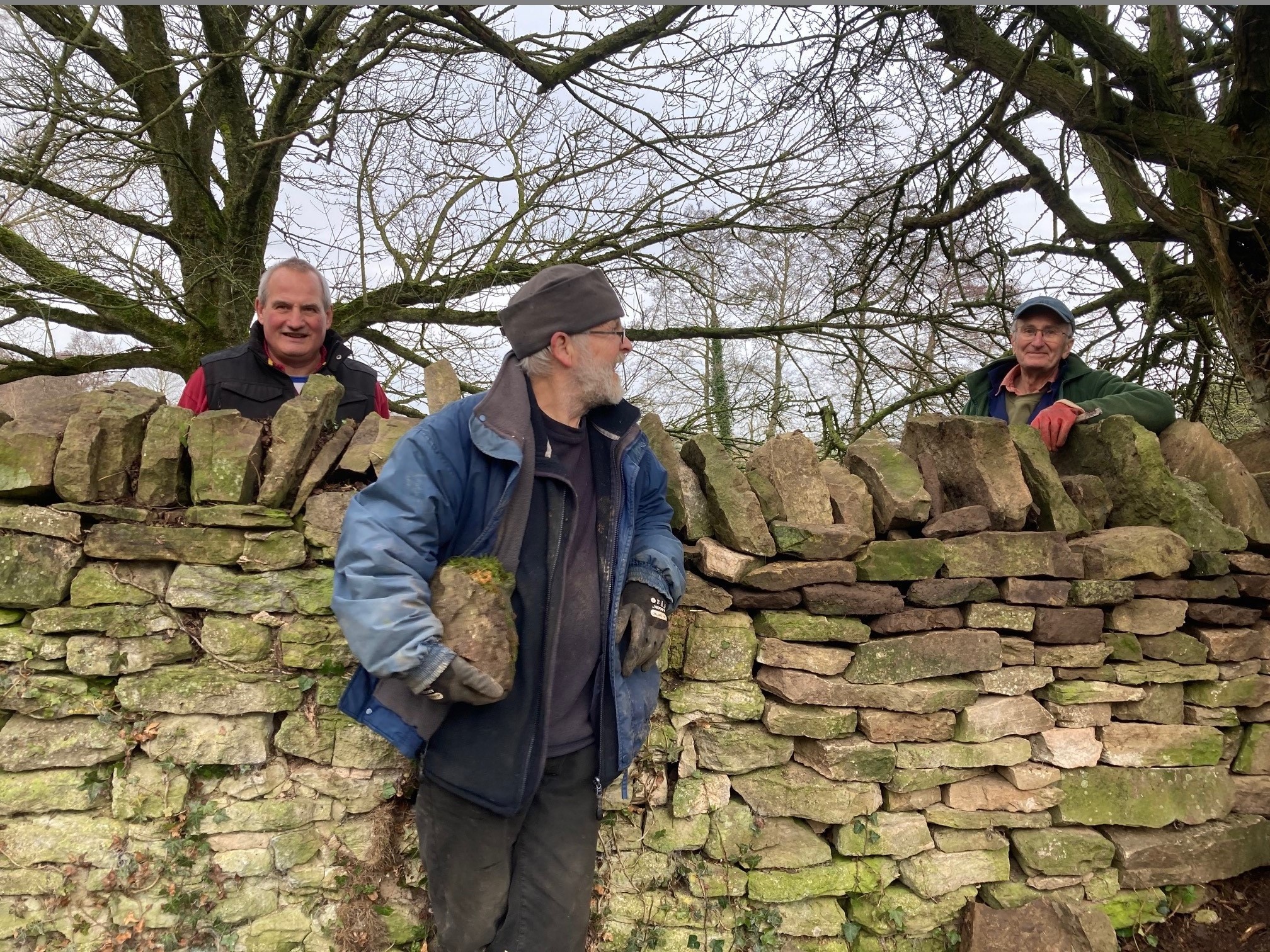 as the rocks that make it. A little later wall (couple of centuries!) and it may have a lime
as the rocks that make it. A little later wall (couple of centuries!) and it may have a lime
based mixture holding the stones in place. This made it easier for the builder as the selected
stones could be stuck together, a wider collection of shapes and sizes too.
Many churches are built on mounds and if roughly round are likely to be places of earlier
pre-Christian origin. As far back as Bronze Age times (5000BC - 800 BC), historical
evidence shows us that burial places or barrows as they are called, served not just as burial
sites but combined communal, secular and religious/spiritual purposes too. When
Christianity arrived in Britain, the then Pope, Gregory 1 st , instructed his missionaries very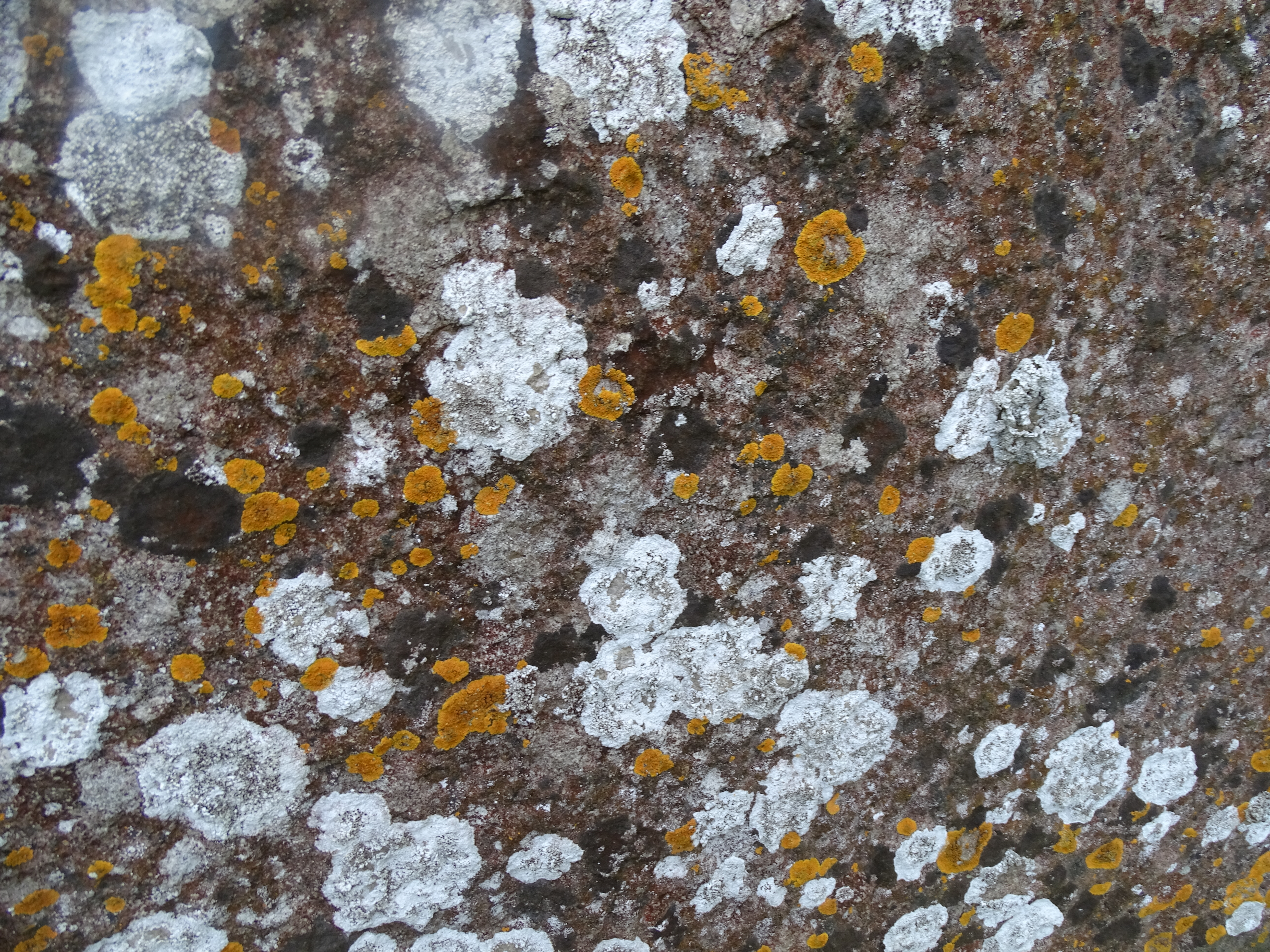
carefully, telling them to be sympathetic to previous religious practices and to build on them
and not destroy. And so our present day church buildings in Shropshire and surrounding
counties, most of which are around 1000years old, are built on older spiritual sites. If your
parish church is mentioned in the Doomsday Book (1086AD) you can almost guarantee your
site is older than Christianity.
While you ponder what you see before you, remember that despite the peace, an awful lot is
still going on. Those that choose to hibernate, dormice, hedgehogs and bats, all possible in
your churchyard, spend winter in deep consciousness but also moments of light inactivity. It
is a survival technique. Other small mammals, like shrews, slow down, hunt less and sleep
more. Badgers do something similar but they are not small! Some insects, butterflies,
ladybirds and some bees, overwinter in a state of torpor but can occasionally be roused on
bright warm(ish) winter days. Frogs, toads and newts all change their behaviour as soon as
the frosts start. They look for secluded spots to shelter from the elements. Compost heaps
are very popular with slow worms! So lots of life there, but it’s just not obvious.
But come the New Year and change will start creeping in. But in the meantime have a very
happy Christmas.
Pics: Top: Hibernating hedgehog
Middle: Culmington dry stone wall.
Bottom: Bromfield lichens.
Anni Holden Calver
Trustee of Caring for God’s Acre and member of the Churchyard Task Team
Secretary of Shropshire Churches Tourism Group